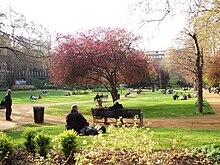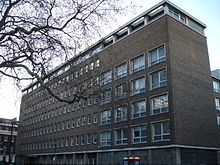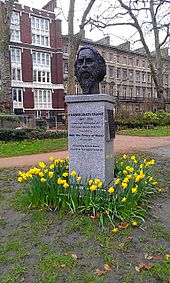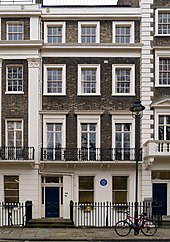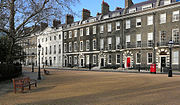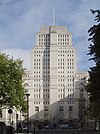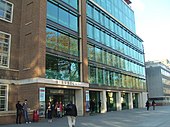The Bloomsbury Group—or Bloomsbury Set—was a group of associated English writers, intellectuals, philosophers and artists in the first half of the 20th century, including Virginia Woolf, John Maynard Keynes, E. M. Forster, Vanessa Bell, and Lytton Strachey. This loose collective of friends and relatives was closely associated with the University of Cambridge for the men and King's College London for the women, and they lived, worked or studied together near Bloomsbury, London. According to Ian Ousby, "although its members denied being a group in any formal sense, they were united by an abiding belief in the importance of the arts." Their works and outlook deeply influenced literature, aesthetics, criticism, and economics as well as modern attitudes towards feminism, pacifism, and sexuality.

Bloomsbury is a district in the West End of London, England. It is considered a fashionable residential area, and is the location of numerous cultural, intellectual, and educational institutions.
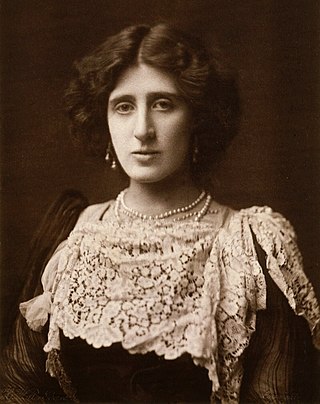
Lady Ottoline Violet Anne Morrell was an English aristocrat and society hostess. Her patronage was influential in artistic and intellectual circles, where she befriended writers including Aldous Huxley, Siegfried Sassoon, T. S. Eliot and D. H. Lawrence, and artists including Mark Gertler, Dora Carrington and Gilbert Spencer.
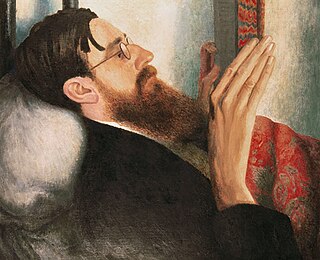
Giles Lytton Strachey was an English writer and critic. A founding member of the Bloomsbury Group and author of Eminent Victorians, he established a new form of biography in which psychological insight and sympathy are combined with irreverence and wit. His biography Queen Victoria (1921) was awarded the James Tait Black Memorial Prize.

Thomas Cubitt was a British master builder, notable for his employment in developing many of the historic streets and squares of London, especially in Belgravia, Pimlico and Bloomsbury. His great-great-great-granddaughter is Queen Camilla.

Russell Square is a large garden square in Bloomsbury, in the London Borough of Camden, built predominantly by the firm of James Burton. It is near the University of London's main buildings and the British Museum. Almost exactly square, to the north is Woburn Place and to the south-east is Southampton Row. Russell Square tube station sits to the north-east.

Bloomsbury Square is a garden square in Bloomsbury, in the London Borough of Camden, London. Developed in the late 17th century, it was initially known as Southampton Square and was one of the earliest London squares. By the early 19th century, Bedford House along the north of the square had been demolished and replaced with terraced housing designed by James Burton.

Tavistock Square is a public square in Bloomsbury, in the London Borough of Camden.

Bedford Square is a garden square in the Bloomsbury district of the Borough of Camden in London, England.

Queen Square is a garden square in the Bloomsbury district of central London. Many of its buildings are associated with medicine, particularly neurology.
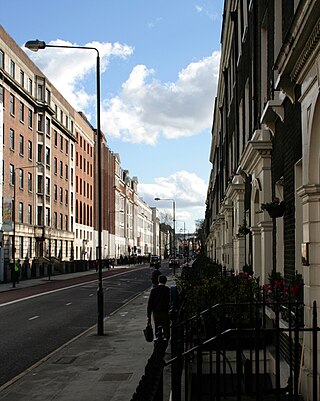
Gower Street is a two-way street in Bloomsbury, central London, running from Euston Road at the north to Montague Place in the south. The street is continued from North Gower Street north of Euston Road. To the south, it becomes Bloomsbury Street.

Torrington Square is a square in Bloomsbury, owned by the University of London, located in central London, England. Today it is a square in name only, most of the houses having been demolished by the university. The southern end of the square is dominated by the University of London's Senate House. Birkbeck College and the School of Oriental and African Studies (SOAS) are located here. To the southwest is Malet Street and to the southeast is Russell Square. The square is the site of a weekly farmers' market, held on Thursdays.

Frances Catherine Partridge CBE was an English writer. Closely connected to the Bloomsbury Group, she is probably best known for the publication of her diaries. She married Ralph Partridge in 1933. The couple had one son, (Lytton) Burgo Partridge (1935–1963).

The Bedford Estate is an estate in central London owned by the Russell family, which holds the peerage title of Duke of Bedford. The estate was originally based in Covent Garden, then stretched to include Bloomsbury in 1669. The Covent Garden property was sold for £2 million in 1913 by Herbrand Russell, 11th Duke of Bedford, to the MP and land speculator Harry Mallaby-Deeley, who sold his option to the Beecham family for £250,000; the sale was finalised in 1918.

Chenies Street is a street in Bloomsbury, London, that runs between Tottenham Court Road and Gower Street. It is the location of a number of notable buildings such as Minerva House, the Drill Hall, and a memorial to The Rangers, 12th County of London Regiment. North Crescent starts and ends on the northern side of Chenies Street.
This is a list of the etymology of street names in the London district of Bloomsbury. The following utilises the generally accepted boundaries of Bloomsbury viz. Euston Road to the north, Gray's Inn Road to the east, New Oxford Street, High Holborn, Southampton Row and Theobald's Road to the south and Tottenham Court Road to the west.
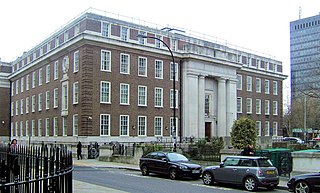
Endsleigh Gardens is a street in the Bloomsbury district of central London, in the London Borough of Camden. It runs south-west to north-east from Gordon Street to Woburn Place. The south-west end becomes Gower Place after the junction with Gordon Street. Taviton Street and Endsleigh Street run off the south side.

The British Medical Association War Memorial, officially the War Memorial at British Medical Association House, Tavistock Square, Bloomsbury, London, commemorates men and women of the medical professions from the British Empire and Commonwealth who died in the Second World War. The memorial was commissioned by the British Medical Association and designed by the sculptor James Woodford. Unveiled in 1954 by Sir John McNee, then President of the BMA, and dedicated by Geoffrey Fisher, the Archbishop of Canterbury, it became a Grade II* listed structure in 1998.
